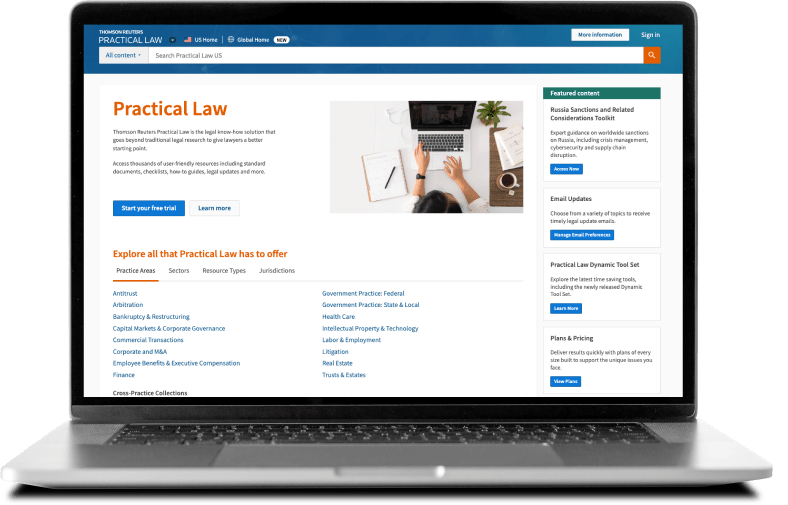Required documents, due diligence in transactions, how to manage risk, and other attorney resources
Corporate law · Transactional law
Highlights
Key documents for due diligence include organizational documents such as the certificate of incorporation and bylaws, commercial contracts, and material agreements such as equity and debt agreements.
Due diligence in business transactions involves assessing the target entity's legal, financial, and operational documents to identify risks and ensure compliance
Transactional law refers to the practice of law concerning business and financial transactions. This includes tasks such as drafting and negotiating contracts, advising on corporate governance, security offerings, handling mergers and acquisitions, and ensuring compliance with relevant laws and regulations.
Jump to ↓
Legal opinions and their role in transactions

CoCounsel Legal
AI lawyers swear by: Trusted content, expert insights for transactional work with ISO/IEC 42001:2023 certification
See it in action ↗What are the key documents assess during due diligence in business transactions?
Due diligence is a process in business transactions which identifies risks, liabilities and compliance gaps before finalizing a deal so that any future complexity can be prevented. The objective of due diligence is to investigate documents of the target entity to understand its legal soundness by a team usually including legal, business, accounting, and tax specialists.
Organizational documents
The documents that have the legal structure and ownership are the organizational documents. They are the foundation of any business therefore careful analysis of the same is required to assess the legal standing of the company and identify potential governance issues.
- Certificate of incorporation establishes the entity’s legal existence and outlines fundamental details such as name, business purpose, registered agent, and share structure.
- The bylaws govern the internal governance framework such as shareholder rights, board structure, and voting procedures. Under due diligence, it is to be ascertained by the attorneys whether these documents are in compliance with the statutory guidelines or if there is any clause that would restrict or impact the transaction.
- A stock-purchase agreement outlines the rights and obligations of the shareholders. Along with this, they might contain preemptive rights, drag-along or tag-along clauses which might affect the transaction and therefore, the attorneys must diligently observe them.
Commercial contracts
Commercial contracts include a company’s operational framework and financial obligations. These contracts must be evaluated thoroughly as they can identify potential liabilities which can result in compliance risks.
- Customer and supplier contracts: Review the duration of the key customers and the suppliers’ contracts that generate the maximum business revenue.
- Distribution agreements and licenses: Assess the rights and the liability provisions provided in the distribution agreements and licenses and the provisions related to the change of policies and their impact. If the company holds patents, trademarks, copyrights, or trade secrets, attorneys must review licensing agreements to confirm ownership rights and their exclusivity terms.
While reviewing the commercial contracts, you must identify when these contracts are ending, if any non-disclosure agreements are signed by the parties assessing their responsibilities, etc.
Material agreements
These agreements impact the financial, legal, or operational aspects of the business. They can impose restrictions or liabilities in the business transaction, and this is why they are crucial during mergers, acquisitions, financing transactions, and due diligence processes
- Equity agreements include shareholder agreements, stock purchase agreements, voting agreements, and any contractual obligations to buy or redeem shares. They dictate ownership rights and voting control which can pose potential restrictions on stock transfers.
- Debt agreements include indentures, loan agreements, promissory notes, hedge agreements, and other financial obligations, and determine a company’s borrowing power.
- Material contracts such as joint venture agreements, employment contracts, tax-sharing agreements, significant supplier or customer contracts, and licensing agreements, are material if they hold substantial economic value or business risk.
- Merger agreements outline the terms and conditions of the merger, detailing how the businesses will combine and manage the assets and liabilities.
- Subscription agreements are basically a type of contract between investors and companies for purchasing shares or securities in the company.
How to conduct due diligence in transactional law
Whenever there is any significant merger or acquisition taking place, the buyer gathers all the information about the entity that he is going to invest in. Due diligence helps in using the information to negotiate contractual protections such as indemnification or to adjust the purchase price.
The following is the checklist for conducting due diligence in the transactional law:
- You must discuss with the client the budget for conducting due diligence, considering the purpose of the transaction, whether it is a merger, acquisition, or another business deal.
- Determine the scope of the investigation along with the timeline and the risks that are to be evaluated — financial, legal, and operational.
- Be equipped with the due diligence team which includes legal, financial, and technical experts.
- Ensure that you have submitted a request to the target entity for requesting the records such as:
- Corporate records— articles of incorporation, shareholder agreements.
- Financial statements— audited reports, tax filings, debt obligations.
- Commercial contracts— supplier, customer, and licensing agreements.
- Litigation and regulatory compliance history.
- Employment agreements and policies.
- Intellectual property— patents, trademarks, copyrights.
- Conduct the document review and analyze the provided materials diligently with the objective of identifying the following:
- Ownership
- Liabilities
- Compliance with laws applicable
- Identifying the risks
- Clauses that might cause obstruction
- Exit strategies with existing joint ventures or partnership and the dispute resolution mechanism with them.
- Reviewing the historical records of the corporate decisions through minutes of meeting has the potential to disclose the disputes or hidden liabilities that could be of relevance to the business transaction
- Draft a due diligence report wherein you will be required to summarize your findings with recommendations. Discuss with the client whether to proceed, renegotiate, or terminate the business transaction.
Legal opinions and their role in transactions
A legal opinion letter is a document that educates the parties to clearly understand the legal implications and risks involved in the transaction by fostering confidence among them. It is a comprehensive document that not only provides legal conclusions but also explains the basis on which those conclusions are reached.
Scope and limitations
Legal opinions lay out the scope and extent of the investigation along with the limitations. The transaction for which the legal opinion is given must be identified along with the parties involved and the concerned law.
Review
They provide a comprehensive review of the transaction documents, certificates, and material agreements.
Valid formation
Verify that each party including but not limited to borrower, guarantors, or collateral pledgers, is validly formed and duly organized.
Verification
There must be verification through good standing certificates and bring‐down updates if necessary to ensure that no recent adverse changes affect the parties.
Requisite authority
Establish the fact that the entity has the requisite authority to enter into and perform their obligations under the transaction via certificates of incorporation and any related organizational documents.
Relevant certificates
The legal opinion should incorporate and reference relevant certificates and pertinent public filings.
Legal analysis
Offer a legal analysis concluding whether the transaction documents such as loan agreements, security agreements, promissory notes, and guaranties are valid and enforceable under the applicable law.
UCC-1 filing
You can make use of UCC-1 filing to analyze who has the claim over the assets of the target entity as it is a legal form that a lender files to show they have a claim on a borrower’s assets, which are used as collateral for a loan.
SEC filings
Similarly, SEC Filings provide the documents that the public companies must submit to the SEC providing financial and operational information to help investors make informed decisions. It contains annual reports like Form 10-K, quarterly reports such as Form 10-Q, and updates such as Form 8-K.
How to effectively manage risk in business transaction
Transactional attorneys have an important role to play in business transactions by not only identifying and mitigating risks but also ensuring that risks are evaluated within the broader strategic and financial objectives of the business.
Identifying the risks
With effective investigation and diligent inspection of documents and history of the target entity, you can identify the loopholes and potential risks, liabilities, and compliance issues.
Evaluations of the risk
This includes weighing the risks against potential returns and developing a deeper understanding of provisions such as indemnities, warranties, and limitations of liability.
Mitigation of risks
Once risks are identified and evaluated, mitigation of the risks is the next step which is to minimize the potential damage by using various legal tools and strategies such as advising on insurance coverage to limit the exposure to liabilities.
Differentiating between business risk and compliance risk
Once risks are identified, they can be bifurcated further into two categories; business risks which are negotiable as they are to be weighed against the potential returns, and the compliance risks, which are non-negotiable because their violation can result in severe penalties.
Last thoughts and further research
The business environment is complex, which is why all the business entities fear any further complications resulting in disastrous losses. Transactional lawyers can identify, evaluate, and mitigate any of such adverse risks.
Through due diligence and investigation, attorneys are expected to develop strategies for avoiding future risk and giving an edge over the negotiations while making the deal.
Templates
The Practical Law Standard Documents below provide you with:
- A legal due diligence request list to be used in connection with the acquisition of a private company
- A due diligence summary template to be used when reviewing and summarizing a target company’s commercial agreements as part of the due diligence review for a potential merger or acquisition deal
- A due diligence summary template to be used when reviewing and summarizing past stock purchase, asset purchase, or merger agreements of the target company as part of the buyer’s due diligence review in a potential merger or acquisition by the buyer of the target company.
- A due diligence summary template to be used when reviewing and summarizing a target company’s organizational documents as part of the due diligence review for a potential merger or acquisition deal.

Practical Law
Expert how-to guidance, clear explanations of current law, and time-saving tools and templates for transactional work
View all plans ↗





